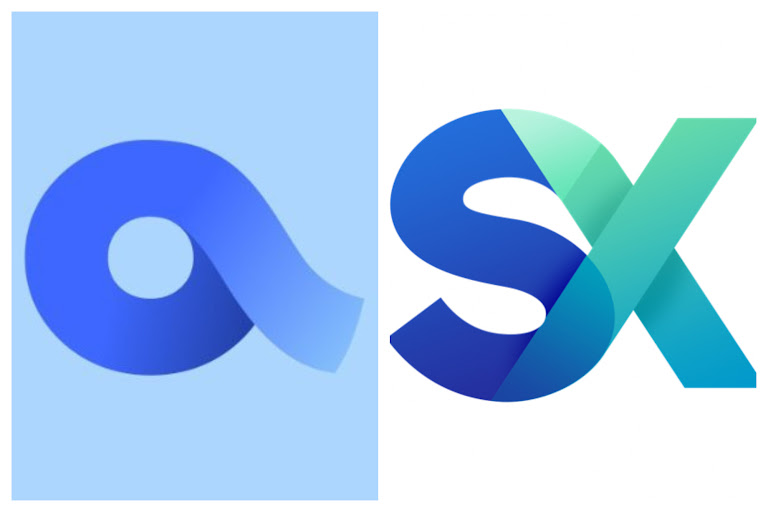Beyond Politics And Sports: The New Frontiers Of Prediction Markets In 2025


In Brief
Prediction markets are evolving from niche speculation into a decentralized tool for forecasting risk, guiding decisions in finance, science, governance, and the metaverse by turning collective beliefs into measurable probabilities.

Prediction markets have long been dismissed as clever parlor tricks for political junkies or sports bettors. But the truth is, they’re evolving into something far bigger — a decentralized lens on how the world thinks about risk, probability, and truth itself.
From crypto protocols hedging against hacks to scientists forecasting breakthroughs, prediction markets are quietly rewriting how we measure collective intelligence. This is no longer about guessing who wins the next election. It’s about using markets to price reality before it happens.
A Brief Reality Check
For years, platforms like Polymarket, Augur, and Zeitgeist were niche experiments. But 2024 and 2025 changed that. Liquidity deepened, infrastructure matured, and institutions started paying attention. Even the Intercontinental Exchange (ICE) — parent of the NYSE — invested up to $2B in prediction markets, signaling that what was once a curiosity is fast becoming credible financial plumbing.
Shayne Coplan, founder of Polymarket, has said the platform’s mission is to become an “alternative source of truth.” In practice, that means transforming every uncertain question — from crypto regulation to global conflict — into data the public can trade on.
Academic support backs him up. Research by Philip Tetlock, author of Superforecasting, found that trained forecasters who update their beliefs over time can beat many experts in accuracy. The takeaway? Crowd intelligence, when structured and incentivized, often outperforms top-down expertise.
That’s the foundation prediction markets are now building on — and crypto is leading the charge.
DeFi’s New Safety Net: Hedging Risk Through Forecasts

Alt cap: Zeitgeist and PredictionSwap brand logos, showing a white, striped circular symbol on a black grid with stars on the left. Right half features a shiny, transparent blue top hat against a black background.
Prediction markets aren’t just for speculation anymore — they’re becoming risk instruments. In decentralized finance, where billions can evaporate overnight due to exploits or depegs, prediction markets can function like a collective insurance mechanism.
Platforms such as Zeitgeist and PredictionSwap are experimenting with markets tied to real DeFi events: “Will a major stablecoin lose its peg this quarter?” or “Will protocol X experience a critical exploit by year-end?”
When traders put real money behind these questions, they create a live, transparent probability layer — one that reflects how likely the market thinks a crisis is. As Paradigm’s Hasu has observed, prediction markets could become “a truth layer for finance,” quantifying fear, trust, and uncertainty better than sentiment indexes ever could.
Forecasting DAOs, Token Launches, and Upgrades

Alt cap: Polymarket brand logo showing a white geometric logo resembling two overlapping triangles or sideways chevrons, forming an abstract letter “M” or “W,” centered on a solid blue background.
Crypto thrives on speculation, but much of it is unstructured noise. Prediction markets turn that chaos into signal.
Markets around DAO proposals, network upgrades, or token launches — like those hosted on Omen or Polymarket — help quantify what communities actually believe. Instead of Twitter polls or gut instinct, investors and builders get measurable confidence data: Will this governance proposal pass? Will the hard fork ship on time?
It’s crowd wisdom with skin in the game — something that could make decentralized governance more transparent and accountable.
NFTs, Gaming, and the Metaverse: Betting on Virtual Economies

Alt cap: Azuro and SX Bet brand logos showing a lowercase “a” with a curved tail on the left, and the right combining “S” and “X” with gradient blue and green tones.
The metaverse runs on belief — in scarcity, hype, and momentum. Prediction markets give that belief structure.
Platforms like Azuro and SX Bet are piloting markets around NFT floor prices, play-to-earn metrics, and esports outcomes. These aren’t trivial side bets; they’re experiments in pricing digital culture itself.
When traders forecast whether a game will double its daily active users or an NFT collection will hold its floor, they’re building a predictive mirror for Web3 economies. Developers can watch those forecasts and adjust in real time — a feedback loop where community conviction literally becomes data.
Regulation, Scandals, and Market Events
The crypto world doesn’t just react to regulation — it trades on it.
Prediction markets have become early-warning systems for major events like ETF approvals, lawsuits, or exchange collapses. Polymarket’s high-volume markets on Bitcoin ETFs and FTX creditor recoveries, for instance, have drawn thousands of participants and millions in liquidity.
Coplan has said prediction markets “turn uncertainty into data.” In a regulatory landscape defined by rumor, that’s no small feat. Traders and analysts now use these markets the way Wall Street once used credit-default swaps — as stress indicators for entire ecosystems.
Business Forecasting and Corporate Strategy

Alt cap: Blue and teal triangular shapes arranged in a spiral above the words “Cultivate Labs” in all caps, with “Cultivate” in blue and “Labs” in teal.
Inside big corporations, prediction markets are quietly replacing old-school forecasting models. Companies like Google and HP have tested internal markets where employees bet on product launch timelines, sales targets, or marketing performance.
The results? More accurate forecasts than many managerial reports. Platforms such as Kalshi and Cultivate Labs now offer structured versions for companies seeking probabilistic input on strategic questions — everything from supply-chain disruptions to revenue projections.
By forcing forecasters to stake something (even reputationally), these markets cut through the politeness of corporate culture and surface what people really think will happen.
Science, Health, and Technology Breakthroughs

Alt cap: Metaculus brand showing a large, bold white letter “M” centered on a dark blue background.
Forecasting scientific outcomes may sound abstract, but it’s becoming practical. Platforms like Metaculus run prediction tournaments on AI milestones, climate targets, and clinical trials.
Philip Tetlock’s work suggests that such tournaments “outperform traditional expert models” precisely because they value uncertainty. Participants are rewarded for being flexible, not dogmatic — a quality traditional scientific gatekeeping often punishes.
These markets could eventually guide funding allocation, helping governments and institutions back projects with the highest crowd-estimated probability of success.
Environmental and Climate Forecasting

Alt cap: The image displays the word “Kalshi” in large, bold, green lowercase letters on a white background.
The climate crisis is unpredictable by nature, but prediction markets can help quantify those probabilities — and make them tradable.
Platforms such as Kalshi are already testing event contracts with hurricane counts, drought incidents, or temperature levels. This is particularly powerful for insurers, farmers, and policymakers to hedge their environmental risk using the same types of tools that traders use to hedge market volatility.
It’s an early glimpse of how forecasting could become a global coordination mechanism — one that aligns profit with preparedness.
The Roadblocks Ahead
Still, prediction markets walk a tightrope between innovation and regulation.
- Legal ambiguity keeps many platforms geo-fenced. U.S. regulators, for instance, still debate whether these are “information markets” or disguised gambling products.
- Liquidity remains concentrated in high-profile topics, leaving smaller, niche questions underpriced.
- Oracle integrity — verifying that outcomes are accurate — is another bottleneck, especially in decentralized contexts.
- And then there’s the ethical gray zone: Should people be able to bet on pandemics or natural disasters?
Forecasting researcher Ryan H. Murphy notes that while prediction markets aggregate “dispersed knowledge efficiently,” their value depends entirely on how responsibly they’re built and used. In short, they can illuminate truth — or commodify tragedy.
Where It’s All Heading
Despite the hurdles, prediction markets are entering a new phase — one where they blend DeFi architecture, AI forecasting models, and reputation-based scoring systems.
Upcoming trends include:
- DeFi integrations — automatic hedging tools linked to market outcomes.
- Hybrid human–AI forecasting — combining data models with crowd intuition.
- Open-source governance signals — where DAOs and protocols treat forecasts as inputs, not entertainment.
Once regulatory clarity arrives — and it will — prediction markets could shift from fringe speculation to mainstream infrastructure. Imagine a world where investors, scientists, and citizens check the probability of future events as easily as checking the weather.
Disclaimer
In line with the Trust Project guidelines, please note that the information provided on this page is not intended to be and should not be interpreted as legal, tax, investment, financial, or any other form of advice. It is important to only invest what you can afford to lose and to seek independent financial advice if you have any doubts. For further information, we suggest referring to the terms and conditions as well as the help and support pages provided by the issuer or advertiser. MetaversePost is committed to accurate, unbiased reporting, but market conditions are subject to change without notice.
About The Author
Alisa, a dedicated journalist at the MPost, specializes in cryptocurrency, zero-knowledge proofs, investments, and the expansive realm of Web3. With a keen eye for emerging trends and technologies, she delivers comprehensive coverage to inform and engage readers in the ever-evolving landscape of digital finance.
More articles

Alisa, a dedicated journalist at the MPost, specializes in cryptocurrency, zero-knowledge proofs, investments, and the expansive realm of Web3. With a keen eye for emerging trends and technologies, she delivers comprehensive coverage to inform and engage readers in the ever-evolving landscape of digital finance.


















































